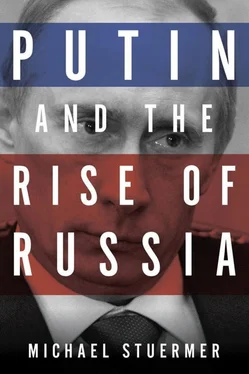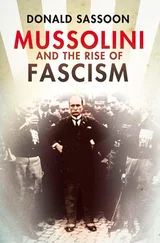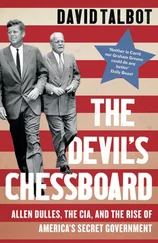The game is nothing but a modernized version of spheres of influence which, of course, need to be defended, whether they are defined in territorial or in value terms, or both. It is here that dangerous entanglements are most likely to occur. Ukraine’s Orange revolution is a case in point and, more especially, that fine line inside Ukraine that divides Russian speakers from Ukrainian speakers, and predominantly Russian sympathies from Western sympathies. The attempt in late 2005 and early 2006 to put pressure on Ukraine through a rise in gas prices and the future North Stream gas pipeline circumventing Ukrainian territory has backfired. Georgia, too, is a case in point, especially Georgia’s breakaway province of Abkhazia, with Russian troops still present, or nearby South Ossetia. Or Moldova, where 500,000 Russians in what is called Transnistria are protected by Russia’s 14th Army, comprising approximately 1500 troops.
On the global chessboard, Putin linked three issues which, on the face of it, are not connected: the Kosovo conflict, the Conventional Forces in Europe (CFE) Treaty and the US proposal to build a radar site for missile defence against Iran in the Czech Republic and deploy ten anti-missile missiles in Poland. After a while, the Russians developed second thoughts concerning missile defence. They realized that, once Iran was in possession of nuclear warheads and could combine them with medium- and long-range missiles, Russian territory would be much closer to the danger than European, let alone US. So instead of staging another missile crisis as in the early 1980s over Intermediate Nuclear Forces (INF), Russian diplomats offered the Americans a disused radar site in Azerbaijan, thus taking the steam out of West European protests against the US project. One of the controversial issues was taken off the chessboard at least for a while. The Russians are unsure whether to oppose or cooperate – and so are the Americans – while most Europeans have a foreboding of confrontation.
Remember the Congress of Vienna
The absence of a grand design, tsarist or Soviet or post-Soviet, does not, however, mean that there is not a certain traditional methodology or approach at work and a set of rules more akin to nineteenth-century diplomatic practice than to the ideologically fraught competition that dominated the world scene after Lenin’s promise of world peace through world revolution in 1917 and Wilson’s promise of world peace through democracy in 1918. The basic principles are based on the concept of state power, sovereignty, equilibrium and the idea of a zero sum game between the players. If one side wins a promise or a province, other players in the game are entitled to compensation of equivalent value – whether Western foreign offices like it or not, understand it or not, follow it or not. The basic metaphor is a never-ending game of chess, not the high-tension high-risk drama of poker. Therefore springing a surprise on the other side is generally seen as dysfunctional and dangerous: the sin of adventurism, in Soviet speak. Predictability counts as a virtue, trust as an asset, personal relations as a channel of influence and a source of prestige.
Another principle important to understand as a key to Kremlin thinking is that big countries count for more than small ones who have, when asked, to sign on the dotted line or look for protection from further afield. The instinct for multilateralism driving most European countries and embodied in the EU’s Common Foreign and Security (CFSP) or even its Common Security and Defence Policy is something the Russians refuse to take seriously – not unlike the Americans. Whenever possible they choose the bilateral route, especially when and where they are in the stronger position: gas for Germany, Italy, Hungary or any other recipient is not negotiated with Brussels Eurocrats but with individual countries. The asymmetry is striking – and mostly successful.
Spheres of influence, while even the term is anathema to Western thinking, are seen as a reality in international affairs. For the Kremlin the CIS is not a makeshift halfway house but a claim to pre-eminence, whether governments in Kiev or Almaty like it or not. Those spheres of influence must be respected, and the term ‘near abroad’ was invented, after the fall of the Soviet Union, as the equivalent of the French chasse gardée . Its undefined nature invites trespassing and misunderstanding but it also keeps up a certain pressure on those who feel they might, willingly or unwillingly, be included.
The Western equivalent of the ‘near abroad’ is not only the tangible prospect of EU enlargement with all its accompanying money transfers, subsidies and other blessings, or a NATO Membership Action Plan. The Russians also feel unnerved by the open-ended mission to spread democratic values, to support democratic reform, to observe via the OSCE what goes on in elections, and to finance all kinds of NGOs. For Bolsheviks of the old school this looks like outright espionage and subversion, while the Kremlin of modern times also shows signs of nervousness. But up to a point Kremlin leaders are willing to accept moral sensitivities in countries like Germany that do not wish to be seen in too close an embrace with the Russian bear.
Summitry, experienced practitioners of diplomacy warn, should only be used when the principals are called upon to make a decision, not merely as a photo opportunity. Otherwise it invites grave misconceptions like George W. Bush’s observation, after his first meeting with Putin: ‘I have looked into his eyes and I have seen his soul.’ Whatever the US president saw, there was many an occasion for Bush to doubt the wisdom of this remark later. But in today’s world leaders understand the benefits of being part of the PR circus and they know well that TV footage showing them in serious conversation with other world leaders brings prestige and popularity, hope and reassurance, signalling to onlookers at Heiligendamm, Kennebunkport or Sochi that the great and the good are holding the globe’s future in their hands. Whether in Paris, Berlin or Moscow, this is an irresistible tool of self-aggrandizement – though not necessarily an instrument to keep the world in balance.
The methodology behind Russian foreign policy would be almost incomprehensible to Soviet diplomats of the Gromyko – ‘Mr Niet’ – school. But it would be immediately recognizable for practitioners from the time of Prince Gortchakov, Bismarck and Disraeli. In the summer of 1878, new borders were drawn across the Balkans, spheres of influence delineated, the small countries told to behave, to sign and to keep silent; a shooting war between the major powers was avoided, for the time being, and the concert of Europe saved, by Bismarck the ‘honest broker’.
Today, the underlying methodology is fairly traditional, with some overriding concerns forcing the big powers together; this is no longer the spectre of communist revolution, now defunct, but the North-South divide, terrorism and the proliferation of weapons of mass destruction. But what about the substance and the strategic long-term guidelines determining Kremlin policy? Is there something like a discernible theory behind all of this? Something that would make the motives of Kremlin leaders more predictable and, somehow, more manageable?
The heirs to the Soviet system might well be expected, true to their theoretical upbringing, to follow a predetermined course in order to avoid serious contradictions and impasses. But if so, the inherent logic is difficult to discern. In fact there is reason to doubt even the existence of a foreign policy masterplan. Under the overall imperative of the national interest – which, however, is not free of contradictions when spelt out and translated into realities on the ground – it is a system of trial and error, driven more by domestic needs than by any grand strategy in the international arena.
Читать дальше











